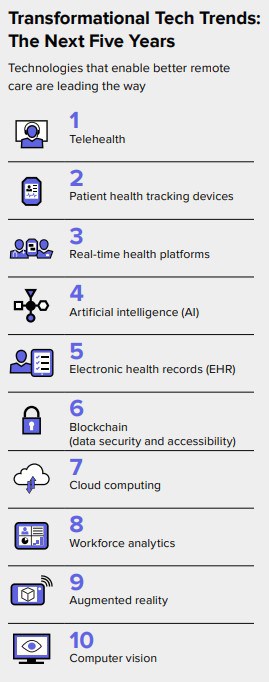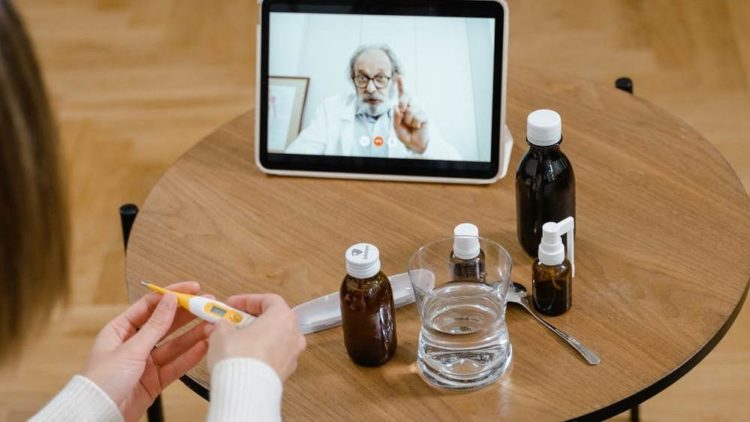Zebra’s Smarter, More Connected Hospitals global report predicts that telehealth and remote patient monitoring will be transformative for both clinicians and patients in the next few years, and most hospital executives plan to increase spending to support new applications.
Eighty-nine per cent of executive decision-makers and 83% of clinicians surveyed agree real-time intelligence is essential for optimal patient care, and hospitals are increasingly investing in clinical mobility tools, real-time location systems (RTLS) and intelligent workflow solutions to support smarter, more connected workflows.
However, 67% of hospital executives still don’t feel their organizations are investing enough to maximize staff efficiency and more must be done moving forward.

“With the ongoing COVID-19 pandemic testing the resiliency of our healthcare systems here in Southeast Asia, there is now an even greater need for healthcare providers to embrace technological innovations to better support the needs of clinicians and patients,” said Christanto Suryadarma, Southeast Asia (SEA) sales vice president, Zebra Technologies Asia Pacific.
Need for intelligent workflow automation

About two-thirds of executives acknowledge physicians and caregivers are overextended during their shifts and spend too much time locating medical equipment and supplies.
Over half report their administrative staff is equally overburdened and unable to complete their work during their shift.
With people’s safety and well-being always the top priority, hospital executives are turning to technology to help combat fatigue, reduce errors caused by manual processes and workarounds, and refocus clinicians’ time on patients:
Approximately 80% of executives plan to automate workflows in the next year to improve supply chain management, make it easier to locate critical equipment and medical assets, better orchestrate emergency rooms and operating rooms, and streamline staff scheduling.
About three-quarters plan to use locationing technologies such as radio frequency identification (RFID) to better track equipment and specimens and improve patient flow and security. They are also turning to locationing solutions to create more dynamic workflows and improve staff efficiency, safety and compliance.
Just as many executives say they will integrate visionary solutions like the Internet of Things (IoT) sensors, prescriptive analytics, and artificial intelligence (AI) to help improve both inpatient and outpatient care as the opportunities for remote physician-to-patient and clinician-to-clinician consulting grow.
“Location technologies and automation solutions are designed to help hospital administrators identify and eliminate workflow inefficiencies throughout the patient treatment process. Having the ability to identify, track, locate and monitor the condition of every patient, staff and asset is thus essential to improving front-line clinician workflows and providing quality patient care,” explained Suryadarma.
Purpose-built mobility solutions drive manageability
Eighty-four per cent of respondents believe the quality of patient care would improve if nurses, physicians and non-clinical healthcare workers had access to collaboration tools and the convenience of using their mobile devices to access healthcare applications.
The approach to mobility is now changing. Nearly half (49%) of the surveyed executives now provide employees with hospital-owned devices intended for healthcare as more clinicians need durable and rugged devices, hospitals require more remote device management capabilities, and data security becomes a top priority.
Those who have already adopted clinical mobility solutions are seeing the positive impact on the quality and cost of patient care with 8-in-ten citing an increase in medical workflow accuracy and precision as well as a reduction in preventable medical errors among other benefits.
Technology investments tied to workforce transformation

Most hospital executives expect to have devices deployed across nearly all staff types in the next five years. However, the focus now is on nurses assigned to emergency departments, critical and intensive care units (ICU), and operating rooms as well as those responsible for IT, supply chain/inventory management and patient transport.
“Team communication plays a key role in patient care while mitigating risks of viral transmissions and maintaining staff morale. Mobile devices are critical tools for hospitals to better manage their resources in the coming years given the increase in demand to automate the orchestration of high traffic areas in hospitals,” said Johnny Ong, APAC healthcare practice lead, Zebra Technologies Asia Pacific.





